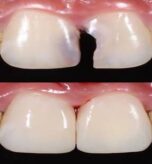When it comes to repairing cavities, dental fillings are a common and essential treatment. Over the years, the materials used for fillings have evolved significantly, with two popular options being tooth-colored fillings (also called composite resin fillings) and silver fillings (also known as amalgam fillings).
If you’re wondering, “Are tooth-colored fillings safer than silver fillings?”, you’re not alone. This question is common among patients seeking the best, safest, and most aesthetic option for their dental restorations.
In this blog, we’ll explore both types of fillings, their safety profiles, pros and cons, and help you understand which might be best for your oral health.
What Are Silver Fillings?
Silver fillings, or dental amalgams, have been used for over 150 years. They are made by combining mercury with other metals such as silver, tin, and copper. The mercury binds these metals together to form a durable, long-lasting filling.
Advantages of Silver Fillings:
- Very durable and strong
- Often last 10-15 years or more
- Generally less expensive than tooth-colored fillings
- Effective for large cavities, especially on back teeth where chewing forces are high
Concerns About Silver Fillings:
- Mercury content has raised safety concerns among some patients
- Not tooth-colored, so they’re more noticeable in your smile
- Can cause teeth to crack or fracture over time due to metal expansion and contraction
- Some people have allergies to metals used
What Are Tooth-Colored Fillings?
Tooth-colored fillings are made from composite resin, a mixture of plastic and fine glass particles. These fillings are designed to blend in with your natural tooth color, providing a more aesthetic result.
Advantages of Tooth-Colored Fillings:
- Blend seamlessly with your natural teeth
- Bond directly to the tooth, which can provide additional support
- Less tooth structure needs to be removed during preparation
- Mercury-free, alleviating safety concerns about mercury exposure
- Can be repaired or replaced easily
Considerations:
- Slightly less durable than amalgam for very large fillings
- May cost more than silver fillings
- Placement can take longer because the tooth must be kept dry during application
Are Tooth-Colored Fillings Safer?
The safety of dental materials is one of the top priorities for both patients and dental professionals. Let’s examine the safety aspects of each filling type.
Mercury Concerns with Silver Fillings
Dental amalgam fillings contain about 50% elemental mercury by weight. Mercury is known to be toxic in certain forms and high doses, but the mercury in amalgam is bound within the alloy, reducing exposure.
Multiple health organizations, including the American Dental Association (ADA), World Health Organization (WHO), and the U.S. Food and Drug Administration (FDA), have reviewed scientific evidence and concluded that dental amalgam is generally safe for most patients.
However, some individuals, such as pregnant women, young children, or people with mercury allergies, may be advised to avoid amalgam fillings.
Safety of Composite Resin Fillings
Composite fillings do not contain mercury and are considered safe for use in dental restorations. They are FDA-approved and have been used for decades without significant safety concerns.
There are some reports of rare allergic reactions to composite materials, but these are very uncommon.
Environmental Considerations
Mercury from dental amalgam can contribute to environmental pollution if not disposed of properly. Many dental offices follow strict protocols to capture and recycle amalgam waste to minimize environmental impact.
Composite fillings do not contain mercury, so they have a lower environmental risk.
Which Filling Is Best for You?
Choosing between tooth-colored and silver fillings depends on several factors:
- Location of the Cavity
- Silver fillings are often preferred for large cavities on back teeth because of their durability.
- Tooth-colored fillings are ideal for visible front teeth or smaller cavities where aesthetics matter.
- Personal Health
- If you are pregnant, have mercury sensitivity, or other health concerns, tooth-colored fillings might be safer.
- Otherwise, silver fillings are considered safe and effective.
- Cost
- Silver fillings are typically less expensive.
- Composite fillings usually cost more but offer a cosmetic advantage.
- Longevity and Maintenance
- Amalgam fillings last longer but may require more tooth removal.
- Composite fillings bond to the tooth but may wear faster, requiring more frequent replacement.
Final Thoughts
Are tooth-colored fillings safer than silver fillings? In terms of toxicity and chemical safety, tooth-colored (composite) fillings avoid the use of mercury and are considered safer for people concerned about mercury exposure. However, extensive research supports the safety of silver fillings for the vast majority of patients.
Your best choice depends on your unique dental needs, health considerations, budget, and aesthetic preferences.
Always consult your dentist for a personalized recommendation. A professional will evaluate your cavity, discuss the options, and help you decide which filling type is the best fit for your smile and health.



